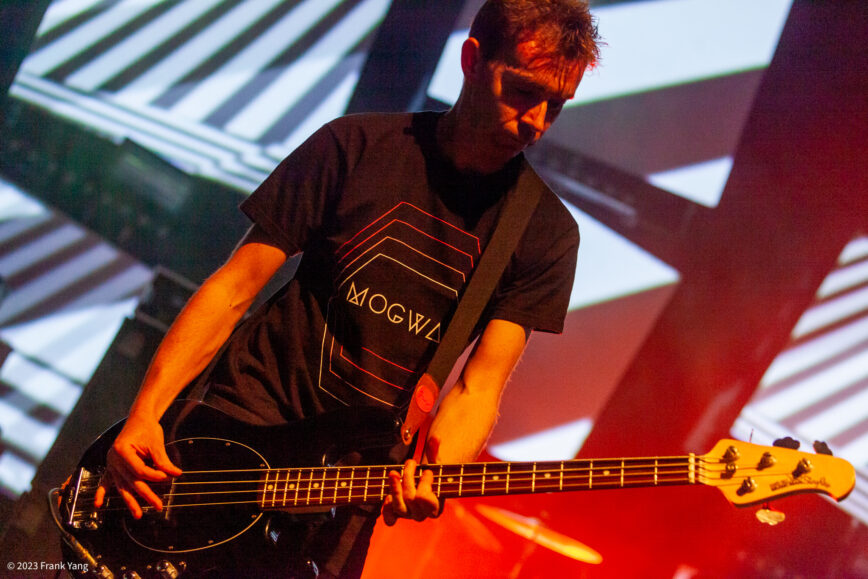With six years having passed since Slowdive’s last album – a long time, certainly, but not as long as the 22 years that preceded it – there hasn’t been a lot of press around the band of late. Sure, they’ve started touring again in the past year, but really the only question anyone’s asking is, “where’s the new record?”. A question Neil Halstead answered to Australian podcast SixPack earlier this month, declaring it to be complete and describing it as:
Some of the stuff I bought in was very electronic based, because that’s where I’m coming from sometimes, and then it will work its way back to being an indie, guitar thing. We end up meeting in a place where everyone is happy.
Neil Halstead, Slowdive
Slowdive Have Finished Their New Album @ Consequence Of Sound
There’ve been no further details about its release, but a Fall street date seems probable, and with that hopefully more touring and certainly more interviews. Australia’s Mixdown has gotten ahead of the curve with a feature interview with bassist Nick Chaplin, intended to coincide with their Australian tour which was unfortunately canceled at the last minute due to an injury to drummer Simon Scott. And while those dates are intended to be rescheduled, the piece has gone to press undeterred and it comes with a lot of great stuff about the band’s early days, the current state of shoegazing, their relationship with labels, and more. It’s all worth a read but I’ll pull a few bits of particular interest.
Firstly, there’s this about the songwriting process on the new record:
Nowadays, Neil has a bit more of a focused idea of what things should sound like – I think back in the 90s it was probably a bit more collaborative. He actually quite likes to be collaborative; it’s just harder for us to do that with our lives structured the way they are.
For this [forthcoming] record, there’s a couple of exceptions, but most of the songs were pretty fully realised in Neil’s head, and then we play around in the studio and play different parts and he acts as a producer as well… he’ll take it all away and cut it all up and mix it together and then we give it to a mix engineer to kind of finish off. He’s quite a traditional songwriter. His solo career is very sort of folksy, just an acoustic guitar and acoustic instruments and singing songs about Cornwall where he lives. And so, a lot of Slowdive songs actually come from that, then we just add the band’s kind of… aesthetic?
Nick Chaplin, Slowdive
Gear Talks: an interview with Slowdive @ Mixdown
For the gearheads, Chaplin offers a little info on how his six-string compatriots’ setups differ now than they did in their first incarnation:
Back in the 90s we had two boxes, they were Yamaha FX 500 boxes, and they had the traditional Slowdive sounds preprogrammed on them so you’d just hit a number and it would sit on top of the amp, and eventually we had them rack mounted, and that was it! And then the guitarists had basic distortion pedals, and maybe some chorus and reverb or whatever, but it was all through these little FX 500 units whereas now all that’s gone, and the guys have got these huge suitcases with about 50 million pedals on them.
Nick Chaplin, Slowdive
Gear Talks: an interview with Slowdive @ Mixdown
And as for his own gear, Chaplin reveals he’s switched from the Music Man Stingrays we always saw him with a few years ago – and yes, I checked my pics from their Tomavistas set in Madrid last year, and it’s a Jazz Bass:
I struggle with coordination, so I can’t have too many pedals… I’ve got a Hotcake overdrive and a Boss Bass Chorus and a tuner and that’s basically it. I don’t even have that many basses. At the moment I’m playing a Fender Jazz Bass, one of the newer active ones, I used to have a Jazz back in the 90s which was a passive one, and it never had enough grunt really for onstage, I used to always use the Musicman Stingray on stage because that was the one that would really cut through, and the rest of the band could always hear that big sound – and whenever I brought the Jazz out they’d be like, are you even playing?
But I always wanted to go back to the Jazz cause I like the neck and I like the shape, so this time around when I saw that they’d produced some active ones that are slightly more powerful sounding I picked up one of those. That’s what I’m using at the moment. That and a Gibson Thunderbird, which I like cause it looks metal.
Nick Chaplin, Slowdive
Gear Talks: an interview with Slowdive @ Mixdown

